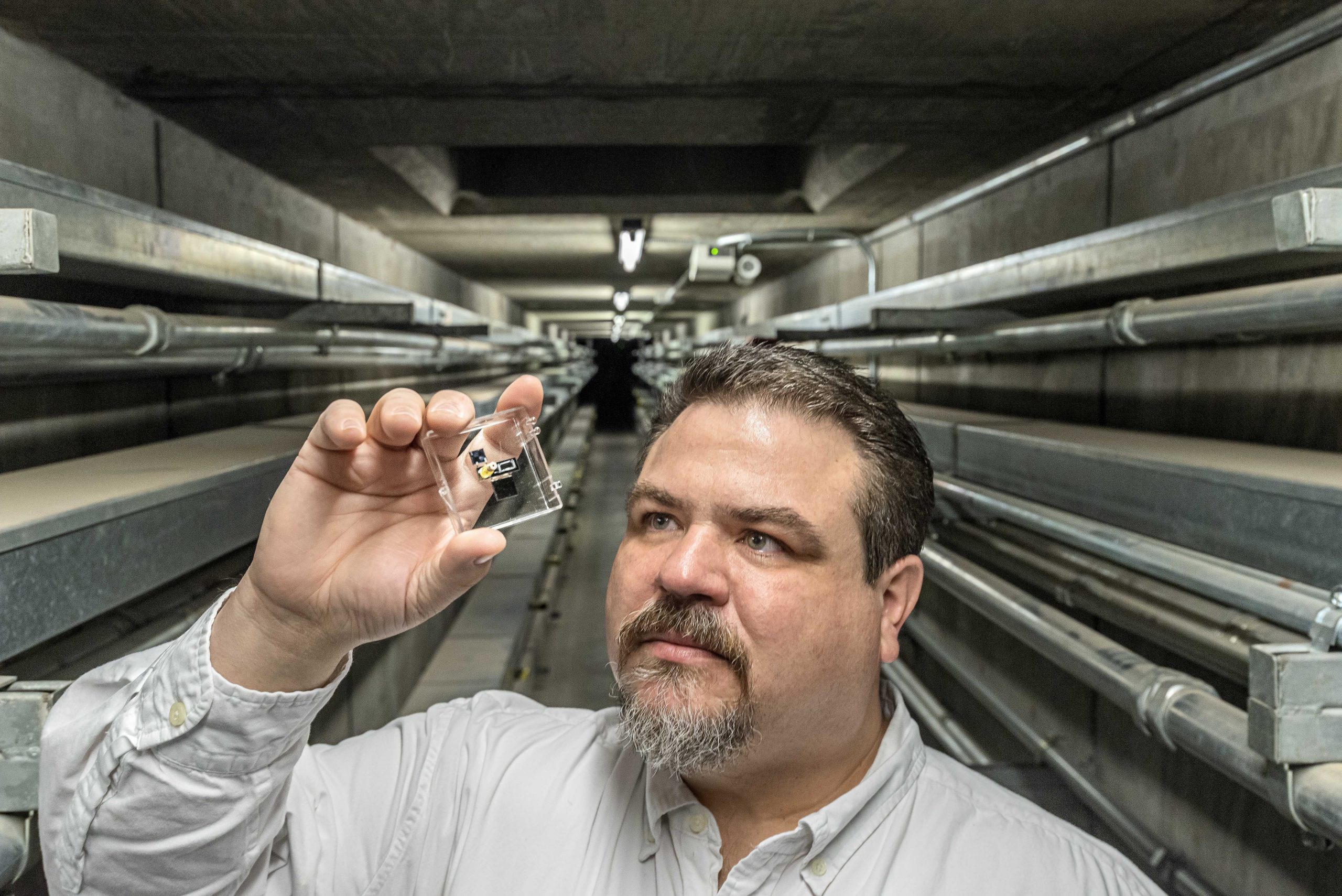ALBUQUERQUE, N.M. — A sensor for detecting toxic gases is now smaller, faster and more reliable. Its performance sets it up for integration in a highly sensitive portable system for detecting chemical weapons. Better miniature sensors can also rapidly detect airborne toxins where they occur, providing key information to help emergency personnel respond safely and effectively to an incident.

Chemical identification typically involves collecting a sample at the scene of a chemical release and bringing it back to a room full of equipment operated by trained personnel. The machines sift through a sample of various gases and weigh the molecules to determine their identities. And while portable versions of these instruments, known as mass spectrometers, are commercially available, they are less sensitive than their lab-based counterparts.
For more than 20 years, researchers at Sandia National Laboratories have been working to avoid the performance penalty for portable gas detection. Their sensors employ a technique called gas chromatography, or GC for short.
Briefcase-sized instruments from Sandia have sniffed for nerve and blister agents continuously for 22 months in the Boston subway without a false alarm. Sensors about the size of a AA battery can detect a compound in sweat that signals smuggled humans. Handheld gas sensor systems can also monitor crop health by identifying gases that plants release when stressed by drought or sickness.
Now, Joshua Whiting, an analytical chemist at Sandia, and his colleagues shrunk their sensor to about the size of a dollar bill while also increasing the performance of the sensor. The system now separates a gas sample twice — yet the entire analysis happens in less than 10 seconds. The extra separation step reduces interference from solvents, cleaners and diesel fuel that could also be in the air during a chemical weapons release. Less interference also means the signal for detected target compounds is more reliable. “The false alarm rate for this multidimensional GC system is even lower than before,” Whiting said.
In a paper recently published in Lab on a Chip, the researchers used the sensor to identify each ingredient of a 29-compound mixture in seven seconds. The system also reliably detected compounds that simulate mustard gas and phosphonate-based nerve agents during 40 days of continuous operation.
“With rapid analysis, operators can learn about an exposure to toxic gases in time for people to take personal precautions, evacuate an area and mitigate potential damage,” Whiting said. The trick to that rapid analysis is a pressure valve in the sensor that controls how quickly gases flow through each separation step. Controlling this flow with pressure means the sensor uses less energy than similar temperature-controlled systems.
Energy efficiency, combined with reliable detection in an increasingly small package, sets the researchers up for the next phase of the project: building a fully portable analytical system with integrated chemical separation, selective detection and computerized data analysis that performs as well as — or better than — lab-based equipment.
The majority of the funding for the micro-gas sensing research has come from the Defense Advanced Research Projects Agency (DARPA) and the Defense Threat Reduction Agency (DTRA), along with some funding from Sandia’s Laboratory Directed Research and Development program. The researchers are now seeking funding to build the integrated system and to incorporate additional functionalities that can compete with lab-scale equipment.